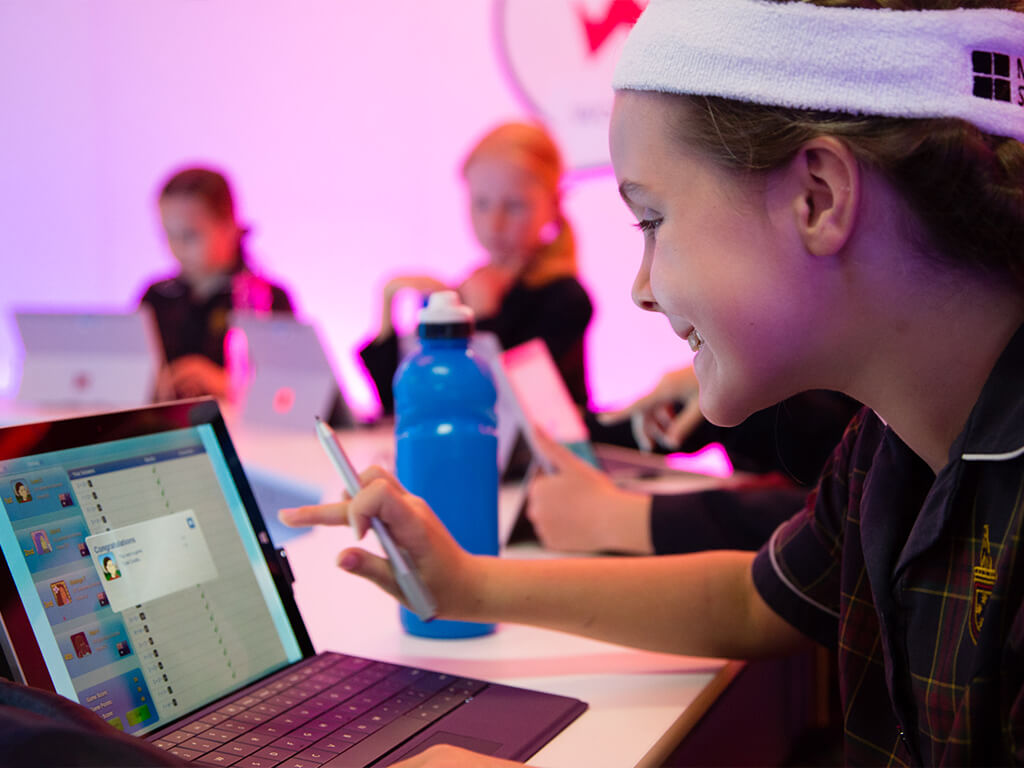When Grade 5 teacher Jared Bremner joined First Baptist Christian School in the Cayman Islands, Mathletics was already woven into their math curriculum.
Six years later, he can’t imagine teaching without it.
First Baptist’s approach was different from the start: they were intentional about implementation. What started as simply adding another digital resource has become a complete shift in how students experience math from Kindergarten through Grade 8.
Mathletics, our ESSA-certified online math program for ages 5–16, delivers personalized learning through explicit and systematic instruction, engaging activities, gamified challenges and immediate feedback. But at First Baptist, it’s become much more than a supplement: it’s central to how they teach.
Bremner now oversees implementation across the entire school, ensuring every new teacher successfully integrates the program into their lessons.
His personal journey, from newcomer to passionate champion, reflects the school’s own evolution in digital math education.
From ‘just another resource’ to essential instruction
Six years ago, First Baptist had a clear goal: find a math platform with diverse resources that teachers could actually use to improve instruction through technology.
“While it started off as just a resource they wanted to use,” Bremner reflects, “is now an important part of our instruction.” What made the difference? “We find Mathletics to be very encompassing. It’s a very layered product,” Bremner explains, “from working through problem-solving questions to assessment to fun games.”
This comprehensive nature meant teachers weren’t juggling multiple tools: they had everything in one platform. The school committed to systematic implementation and real teacher training, instead of just handing teachers another digital tool and hoping for the best. Their approach? Start with the youngest learners and build up.
Students learn the platform progressively from Kindergarten through Grade 8, teachers get ongoing support (not just a one-time training session) and most importantly, Mathletics becomes woven into daily instruction rather than treated as an add-on.
“We’ve been intentional about using Mathletics,” Bremner explains, “and so from Kindergarten up to Grade 8, we’re really training our children how to understand the platform, how to use it and how they can benefit from the resources.

When learning becomes play (without students realizing it)
Ask Bremner about gamification and he lights up. He’s watched something remarkable happen in his classroom over the years: students so absorbed in math challenges they forget they’re actually learning.
“Making things in a gamified way allows them to enjoy their learning and learning almost becomes secondary,” he shares. “And so, through that gamification, they learn that they can progress, and they can make mistakes, but they can still improve.”
For today’s digital-native students, this isn’t just nice to have – it’s speaking their language.
And nowhere is this more evident than with Live Mathletics, the program’s real-time math competitions where students can compete with peers from around the world.
These live challenges test students’ math fluency skills and reflexes, allowing whole schools, classes and individual learners to go head-to-head.
For Bremner’s class at this international school, it means they’re not just competing with classmates: they’re facing off against students from India, Pakistan, South Africa and Canada.
“[They] find ways of how they can get their answers in quicker and how they can compete with children around the world,” Bremner observes. “And so, it grows a global mindset not just within the classroom but on the platform that we’re using.”
The competitive element has genuinely engaged students. They enjoy customizing their avatars, working to beat their personal bests in timed challenges and tracking their progress against peers worldwide.
The immediate feedback and global competition keep them motivated to practice more, proving that when learning feels like play, students naturally want to keep improving.

The teacher’s game-changer: Data that actually helps
The engagement is just the beginning. For Bremner, the real value comes from how Mathletics helps him meet every student where they are.
Using the platform’s reporting features, Bremner tracks how students perform on activities and quests, gauging their responses against the school’s grading scale. But he doesn’t stop at assessment.
“What we do is build from that,” he explains, “build their understanding and make sure they’re [not just] working on topics being taught in class at that moment… so it’s not just about current learning, it’s about identifying students that need to be challenged and also children that need to be supported.”
This means advanced learners get extension activities that push them beyond the current curriculum, while struggling students receive targeted support exactly where they need it.
The school reinforces this differentiated approach with Mathletics’ printable booklets in their Response to Intervention (RTI) program.
The result? Every student gets what they need (challenge or support) based on real data, not guesswork.
Leadership that values what works
At First Baptist, administrative support comes with accountability. The principal’s approach is clear: she’s committed to providing Mathletics but expects to see it actively used in classrooms.
“She wants to make sure the teachers are intentional in its use,” Bremner explains, “and that it’s not just another resource that we just add to the list.”
This results-focused leadership means the school maintains accountability through:
- Usage monitoring via administrative accounts
- Activity tracking to measure engagement levels
- Regular review of minutes used and activities assigned
- Data-driven decisions about program effectiveness.
“I have an admin account and I look at how many activities are being assigned and how many minutes are being used,” Bremner shares. “We make sure that it’s actually being used for its true value.”

From one teacher’s journey to school-wide success
When Bremner first arrived at First Baptist, integrating a new platform while adapting to a new country and school felt challenging. Yet his perspective shifted dramatically through experience:
“And over time of using it, I grew to love it!” he reflects.
His transformation, from newcomer to the teacher who now guides colleagues through Mathletics implementation, mirrors First Baptist’s own six-year evolution.
Through Bremner’s experience, we see the key elements that drive success:
- Comprehensive training that unlocks features teachers didn’t know existed
- Engaged students participating because they want to, not because they must
- Meaningful data that informs teaching decisions and student support
- Committed leadership that backs investment with accountability and clear usage expectations
- Systematic progression building platform fluency from kindergarten through eighth grade
- Sustained support offering professional development beyond one-time training sessions.
Today, Bremner monitors usage data and provides the support he once needed himself, embodying the long-term approach First Baptist has built.
“When it comes to Mathletics, because we’ve embedded it within our culture of numeracy in the school, it’s allowed our teachers to feel confident in how they use it and our students to feel comfortable and confident with the platform.”
Bremner’s six-year journey shows exactly how sustainable maths success can happen – one teacher, one classroom, one school at a time!

